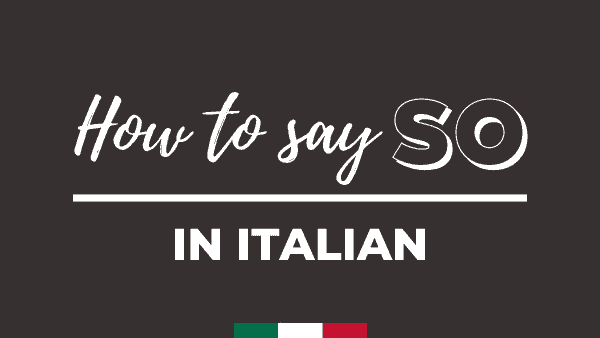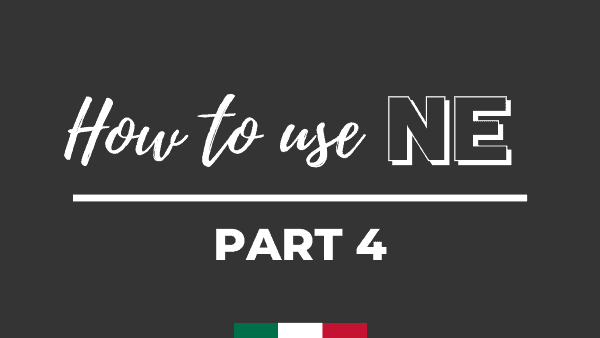How to use the Italian Subjunctive?
Juha from Sydney, Australia asks: “What is this SIA I often see in sentences“?
The Italian Subjunctive (CONGIUNTIVO) is a verbal “mood” that is used in many situations in Italian, mostly in subordinate clauses and after certain expressions.
Download the PDF
No email required
Most verbal tenses you already know (presente, passato prossimo, imperfetto, futuro etc.) are all tenses belonging to a verbal mood called “INDICATIVO“.
Just like the INDICATIVO, the CONGIUNTIVO has its own selection of verbal tenses (presente, passato, imperfetto and trapassato).
What this means is that in some cases you are have to swap the tense that you think you should be using (say for example a present tense) for a the same tense, but from the CONGIUNTIVO mood.
▷ AN EXAMPLE:
1) La ragazza è alta – 2) Io penso
1) The girl is tall – 2) I think
The two statements above both contain the present tense, from the INDICATIVO mood, and they are quite correct. But if I wanted to merge them into a single sentence like “I think (that) the girl is tall” in Italian the second verb (“is”) would not be the present tense of the INDICATIVO (“è”) but rather the present tense of the CONGIUNTIVO: “SIA“.
IO PENSO CHE LA RAGAZZA SIA ALTA
I think (that) the girl is tall
BUT WHY?
I suggest you don't go crazy over this, as it takes students if Italian years to get the CONGIUNTIVO right and even native Italians (some 50% of them!) can't use it right!
The main idea is that we use the CONGIUNTIVO when a statement is not in the main clause, but it's actually dependant on the main clause. In other words, we tend to use the CONGIUNTIVO is subordinate clauses.
MOST TYPICALLY this means in clauses that are preceded by CHE (or special words that just call for the CONGIUNTIVO – we'll see them later).
▷ ANOTHER EXAMPLE:
1) Sam parla italiano – 2) Io non so
1) Sam speaks Italian – 2) I don't know
Both sentences are correct, with the Present Tense of the INDICATIVO. BUT if we put them together…
IO NON SO SE SAM PARLI ITALIANO
I don't know whether Sam speaks Italian
That PARLI, as confusing as it is, is the 3rd person singular (“he/she“) of the Present Tense of the CONGIUNTIVO mood.
[The Present Tense INDICATIVO – the one you already know – would be PARLA, right?]
Learn Italian to Fluency
- The program you've been dreaming of is here
- Better than having a private tutor
- In-Depth Italian lessons for complete clarity
- Extensive pratice opportunities
- Access to our community - you are never alone!
- A true learning experience to Italian Fluency
So what do I do about this CONGIUNTIVO madness?
Well, first of all, keep your cool and remember that it is not essential that you get it right, all the time. Italians will still understand you if you use the correct tense form the INDICATIVO mood (the verbs that you already know), when you should in fact be using tenses from the CONGIUNTIVO.
It is nice to be using the CONGIUNTIVO correctly though, as it is a sign of an educated person.
The best thing would be to get ease into it by using in the most common cases: with the verbs ESSERE and AVERE.
We use the CONGIUNTIVO in these situations:
- IN SUBORDINATE CLAUSES
- AFTER VERBS OF OPINION
- AFTER CERTAIN EXPRESSIONS
The Subjunctive Mood (CONGIUNTIVO) is a tricky beast. Be kind to yourself if you don't always get it right. The more you hear it, the more you'll internalize it.
join our italian community
- Access a ton of content on this website
- Weekly Digest with a ton of Italian lessons, videos & facts!
- Invitation to Live Q&A Lessons with Manu
- Invitation to exclusive Webinars, Live Lessons & Games
- Coupons, Discounts & Specials for our Premium Italian Courses
Present Subjunctive of ESSERE (to be)
| CHE IO SIA | That I am |
| CHE TU SIA | That you are |
| CHE LUI/LEI SIA | That he/she/it is |
| CHE NOI SIAMO | That we are |
| CHE VOI SIATE | That you guys are |
| CHE ESSI SIANO | That they are |
Note how I am suggesting that you learn the verbs from the CONGIUNTIVO mood in this manner, with the “CHE” as part of the verb.
This will remind you that we never use a verb from the CONGIUNTIVO as the main verb of a sentence!
▷ SOME EXAMPLES:
È IMPORTANTE CHE VOI SIATE PAZIENTI
It is important that you are/be patient
NON SO CHI SIA QUELLA DONNA
I don't know who that woman is
CREDO CHE LORO SIANO BRAVE PERSONE
I believe (that) they are good people
Present Subjunctive of AVERE (to have)
| CHE IO ABBIA | That I have |
| CHE TU ABBIA | That you have |
| CHE LUI/LEI ABBIA | That he/she/is has |
| CHE NOI ABBIAMO | That we have |
| CHE VOI ABBIATE | That you have |
| CHE ESSI ABBIANO | That they have |
▷ SOME EXAMPLES:
CREDO CHE LEI ABBIA RAGIONE
I believe (that) she is right (“to have reason” means “to be right” in Italian!)
MARCO PENSA CHE LORO ABBIANO GIÀ COMPRATO IL DOLCE
Marco thinks (that) they have already bought dessert
PLEASE NOTE THAT WHENEVER WE NEED TO USE THE SUBJUNCTIVE WE TEND TO USE THE SUBJECT PRONOUN (which are usually omitted when we use verbs from the Indicative Mood).
Penso che TU sia bella
I think (that) you are beautiful
This is because the verb SIA could be referring to several different subjects, namely I , YOU, HE, SHE, or IT.
There is a large range of expressions that demand the subjunctive. Many of them contain the word CHE so they'll be easier to spot, but many don't.
It's just a matter of learning which expressions use the subjunctive and which don't.
Here are some of the most common ones:
- SEBBENE
Even though - NONOSTANTE
Notwithstanding (despite the fact that) - PURCHÉ
Provided that - BENCHÉ
Although - AFFINCHÉ
So that - MALGRADO
Even though, despite the fact that, despite - PRIMA CHE
Before
▷ SOME EXAMPLES:
NONOSTANTE SARA SIA STANCA, VIENE COMUNQUE ALLA FESTA
Despite the fact that she is tired, Sara is still coming to the party.
Despite being tired, Sara is still coming to the party.
Even though she's tired, Sara is still coming to the party.
I GENITORI DI STEFANO LAVORANO MOLTO AFFICHÉ LUI POSSA ANDARE ALL'UNIVERSITÀ
Stefano's parents work a lot so that he can go to college.
Here POSSA is the 3rd person singular of the verb POTERE in the Present Tense Subjunctive.
Download the PDF
No email required



